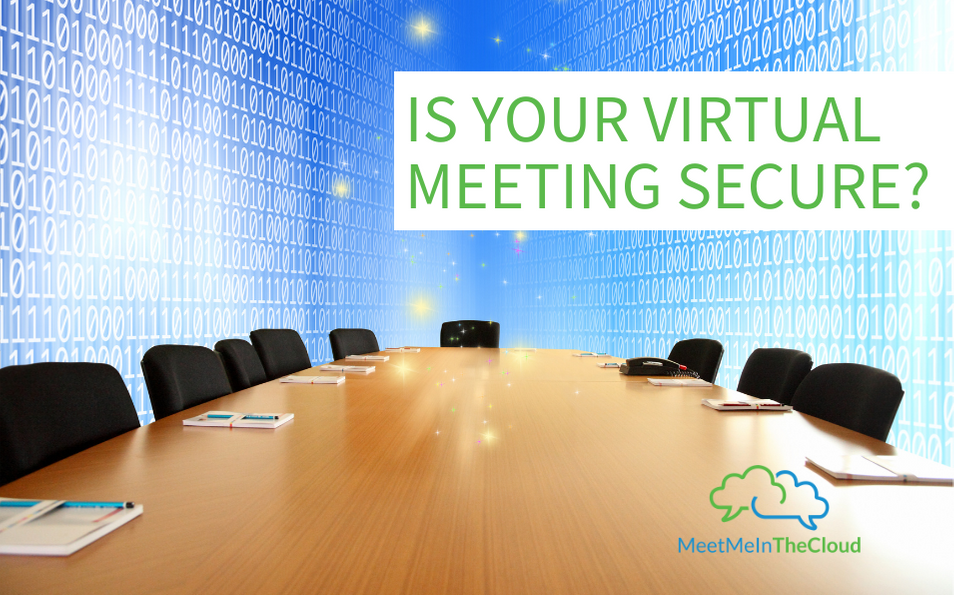As we move toward online solutions to take care of more and more of our work and personal duties, the issue of cybersecurity becomes more important. Virtual meeting security is multi-faceted and complex. So what can we do to make our meetings – from corporate conferences to family video chats – more secure? Are there features we need to enable or other factors to consider?
Let’s talk about virtual meeting security.
Why Virtual Meeting Security Is Important
Did you know that trade secrets are shared in as many as 1 in 5 online meetings? And whether your meeting content includes trade secrets, sensitive topics, or just day-to-day updates, you don’t want uninvited ears to have access to any company meetings or virtual events.
Major Security Threats
Cyber threats are always evolving, and here are some of the top ones to be aware of right now:
- Bombing – This occurs when someone disrupts your professional or important meetings by sharing disturbing or pornographic materials.
- Snooping – This occurs when someone jumps into your meeting discreetly and can eavesdrop on your information. This isn’t as obnoxious as bombing, but it is infinitely more dangerous.
- Compromise – Listeners can glean company secrets, and even financial account access or personal information.
- Hacking – Regardless of which collaboration tools you are using, these platforms have to store participant information at least temporarily. This includes email addresses and other contact information, company information, financial and other reports, and even things like answers to polls. If a hacker finds a way into your system, they can take this information, leading to issues from minor inconveniences to legal ramifications.
Audit Your System
A great way to head off potential cybersecurity threats is to perform an audit of your collaboration system. Walk through your meeting parameters, tool settings, and identify potential weak spots that could be manipulated by cybercriminals.
Meeting IDs – One-Time, Private Use
Many cybercriminals take advantage of our propensity for reusing passwords, meeting IDs, and more. When you create a meeting, make sure you aren’t reusing previous meeting IDs – the information people use to log in to a video conference session.
And remember to keep the meetings private when you can. If they aren’t viewable to the public, you have a better chance of keeping the content in that meeting away from prying eyes and ears.
Include Strong Passwords and Multi-Factor Authentication
Enabling multi-factor authentication and password entry to files and meetings decreases the likelihood that someone unwarranted can get into your meeting. Again, make sure you don’t use specific series (for example CompanyName2021Dec, CompanyName2021Nov, etc.) or other easily recognizable password patterns that could be easily understood and guessed by outside influences.
Check Your Settings
Every collaboration tool and meeting feature has a set of default settings. Before creating your next meeting, take a good look at the settings to see which items could be enabled or disabled to better protect your meeting.
Update Your Company Policies to Ensure Virtual Meeting Security
Now, online conferencing and working remotely have become commonplace. Another way to protect your company and your meeting participants’ information is to create or update a company virtual meeting policy.
You can set up guidelines and rules for creating meetings, outlining appropriate computer or collaboration tool use, downloading and installing unfamiliar programs or files, and more.
Protect Your Next Virtual Meeting
Meet Me In The Cloud’s Event Assist services can help you protect and plan professional and engaging virtual events.
Have questions? Contact us today!

